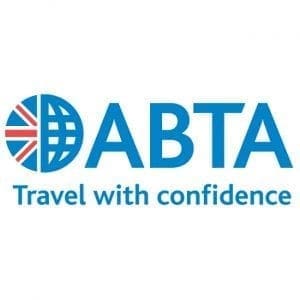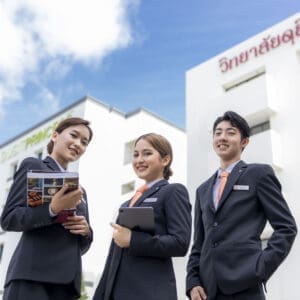 Tourism receipts rose by 3.9 per cent to S$26.8 billion[1], due primarily to growth in visitor arrivals across all top 10 markets[2] and higher visitor arrivals from high-spending markets such as China, South Korea, United States (US) and United Kingdom (UK). Visitor arrivals increased by 6.2 per cent to 17.4 million, with 13 of the top 15 markets showing growth.
Tourism receipts rose by 3.9 per cent to S$26.8 billion[1], due primarily to growth in visitor arrivals across all top 10 markets[2] and higher visitor arrivals from high-spending markets such as China, South Korea, United States (US) and United Kingdom (UK). Visitor arrivals increased by 6.2 per cent to 17.4 million, with 13 of the top 15 markets showing growth.
Chief Executive of Singapore Tourism Board (STB), Mr Lionel Yeo, said, “STB is pleased to report a second consecutive year of record tourism performance. The combined efforts of STB and our industry partners yielded strong results, against a context of better-than-expected global economic recovery, continued growth in Asia-Pacific travel and increased flight and cruise connectivity to Singapore. Together with significant initiatives to support industry innovation and competitiveness, we made excellent progress in 2017 towards our vision of quality tourism growth.”
Market highlights
- By tourism receipts (YTD 3Q2017)
From January to September 2017, tourism receipts grew strongly across most of Singapore’s top 10 markets. China (+10%), US (+22%) and UK (+24%) registered the highest year-on-year absolute growth in Tourism Receipts excluding Sightseeing, Entertainment & Gaming (TRexSEG). China also emerged top in tourism receipts for the third consecutive year. Growth in tourism receipts from China and UK was attributed to an increase in leisure visitors and higher spend on shopping. For US, it was due to more BTMICE[3] visitor arrivals and higher spend on shopping.
Declines in tourism receipts were posted by Indonesia (-7%), India (-1%) and Japan (-9%), mostly because of fewer BTMICE visitor arrivals. In the case of India and Japan, this was coupled with BTMICE visitors spending less as well.
- By international visitor arrivals (2017)
13 out of Singapore’s top 15 markets registered growth in 2017, with seven of them – China, India, Vietnam, Philippines, US, UK and Germany – also hitting record visitor arrivals.
The top three largest markets for visitor arrivals were China, Indonesia, and India. Notably, India (+16%) saw the highest growth rate and, together with China (+13%), contributed to the bulk of the growth in visitor arrivals. Another highlight market for the year was Vietnam (+13%), which became a top 10 market for the first time. Declines in visitor arrivals were posted by Thailand (-3%) and Hong Kong SAR (-13%).
Commenting on the strong growth in visitor arrivals for 2017, particularly from the US, Mr Darren Tan, Managing Director of inbound travel agency World Express Group, said, “We saw an over 15 per cent year-on-year growth in our US arrivals in 2017, with most of the growth coming during the year-end winter season. We see mainly two types of clients Ð those here on fly-cruise programmes and leisure travellers who came here on tour groups or for individual travel. The growth could be attributed to more in-market promotions driven by both STB and the private sector, and good value in airfares and hotel rates. We are optimistic that 2018 will be an even stronger year for the US market.”
- BTMICE industry performance (YTD 3Q2017)
For the first three quarters of 2017, TRexSEG from the Business Travel and Meetings, Incentive Travel, Conventions and Exhibitions (BTMICE) industry grew by 4 per cent to S$3.15 billion compared to the same period in 2016. This was due to BTMICE visitors spending more on Accommodation, Shopping and Other TR Components, which helped to offset the dip of 5 per cent in BTMICE visitor arrivals to 1.75 million.
- Hotel industry performance
Total gazetted room revenue rose by 3.9 per cent to reach S$3.70 billion in 2017 and hotel occupancy rose by 1.5 percentage points. As at end-December 2017, the total number of hotels in Singapore stood at 420, including 22 new ones that opened in the year. Total supply of rooms expanded by 5 per cent to 67,084.
- Cruise industry performance
The cruise industry has been growing from strength to strength. In 2017, passenger throughput increased by 17 per cent to 1.38 million, a record high. Total number of ship calls also rose by 3 per cent to reach 421, of which 16 were maiden calls.
Key highlights of 2017
- New destination brand “Passion Made Possible” gains traction overseas
STB and the Economic Development Board (EDB) introduced a unified brand for Singapore last year Ð Passion Made Possible, which connects Singapore with the international audience on a deeper level through authentic stories and representations about Singapore and Singaporeans. The new destination brand was launched in Singapore in August 2017, followed by 17 overseas markets[4] through consumer activations, trade events, industry partnerships, and global marketing campaigns featuring campaign films and visuals.
Response from international media and trade partners has been very positive, with most applauding the fresh and inspirational approach to destination marketing. There was also good international media coverage, generating a total media value of S$11.3 million[5]. The new brand films garnered a total of more than 192 million video views, and social media engagements on the new brand hit 3.19 million[6].
- STB expands its marketing and digital partnerships
To extend its reach, STB continued to expand its marketing partnerships, including the renewal of a three-year tripartite partnership with Changi Airport Group (CAG) and Singapore Airlines (SIA) worth S$34 million. STB also forged a further S$10 million three-year partnership with SIA and a S$4.5 million one-year partnership with CAG. The partnership with SIA saw the launch of a new SIA in-flight safety video which showcases Singapore in a refreshing way. Under the CAG partnership, STB continued to invest in Chinese and Indonesian tier 2 cities to drive more visitor arrivals to Singapore.
On the digital front, STB signed a Memorandum of Understanding with Tencent, to jointly promote Singapore as a destination of choice for Chinese travellers through Tencent’s various platforms such as Tencent QQ[7]. STB also entered into collaborations with Alipay and Grab, to enhance visitors’ experience through technology and data sharing.
Robust leisure and business event strategy, as well as new/enhanced experiences, keep Singapore a vibrant and attractive destination
Last year, STB announced a string of new branded events such as the Disney Star Wars events (under a three-year partnership with Disney), Ultimate Fighting Championship (UFC) Fight Night Singapore and International Champions Cup Singapore (ICC). It also renewed the Formula One Singapore Grand Prix for another four years. The anchoring of these world-class events forms part of STB’s event strategy to enhance Singapore’s destination attractiveness. STB also continued to grow local events such as Christmas on A Great Street at Orchard Road and Anime Festival Asia, as well as deliver new ones like the Michelin Street Food Festival and Singapore Festival of Fun.
To maintain Singapore’s status as a top MICE city, STB supported a diversity of notable business events such as the Singapore FinTech Festival and VitaFoods Asia. It also strengthened Singapore’s pipeline of business events through securing significant events such as Money20/20 Asia and Rotary International Convention.
Singapore’s vibrant tourism landscape was further embellished by new attractions and lifestyle offerings such as the Digital Light Canvas at Marina Bay Sands, Dover Street Market at Dempsey and AJ Hackett bungy jump at Sentosa, as well as enhanced tourism offerings such as Maritime Experiential Museum at Resorts World Sentosa and Madame Tussauds at Sentosa.
“The record numbers in visitor arrivals and tourism receipts last year are echoed at ION Orchard, which welcomed high footfall and revenues. To further enhance the retail experience, we rolled out a new ION Sky multimedia experience that features Singapore’s heritage and culture and launched a Global Tax-Free Counter for tax refund queries and tickets,” said Mr Chris Chong, Chief, Executive Officer, Orchard Turn Developments Pte Ltd.
- Continuous push for industry innovation and competitiveness
As part of its efforts in building an innovative and competitive tourism sector, STB worked with the Singapore Hotel Association (SHA) and the National Association of Travel Agents Singapore (NATAS) to inaugurate a Hotel Innovation Challenge and a Travel Agents Innovation Challenge respectively. Aimed at encouraging technology adoption amongst the industry stakeholders, there was good participation by both industry and solutions providers for the two challenges. STB is currently supporting the test-bedding of the winning solutions.
STB has also been collaborating with hotel stakeholders to launch a three-year Hotel Careers Campaign to attract young Singaporeans to join the hospitality industry. In addition, STB continued to support the Earn and Learn Programme under the SkillsFuture initiative. In 2017, 97 ITE and Polytechnic students enrolled in the programme, which aims to induct Singaporean talents into the tourism sector.
To facilitate a pro-business environment and encourage more innovative offerings from the Travel Agents industry, and to strengthen the regulatory framework for industry sustainability and better consumer protection, the Ministry of Trade and Industry (MTI) and STB introduced amendments to the Travel Agents Act and Travel Agents Regulations. Reception towards the amended Act and Regulations has been positive.
On the same track of innovation, STB launched a Marketing Innovation Programme (MIP) in April last year to inspire innovative ways of marketing Singapore. Out of the 44 applications received from businesses across a wide range of industries, three campaigns were chosen for support, and will each receive a dollar-for-dollar matching award of up to S$300,000 to amplify their distribution.
2018 outlook and forecast
For 2018, STB forecasts tourism receipts to be in the range of S$27.1 to S$27.6 billion (+1 to +3%) and international visitor arrivals to be in the range of 17.6 to 18.1 million (+1 to +4%).
With the global economic outlook looking favourable and Asia-Pacific tourism poised to expand, STB is generally optimistic about tourism prospects for the year ahead. There are challenges that remain, however, especially geopolitical tensions that might affect consumer travel sentiments and intensifying regional competition.
STB will augment its marketing efforts and roll out more initiatives in destination attractiveness and industry competitiveness to stay on course for quality tourism growth.















